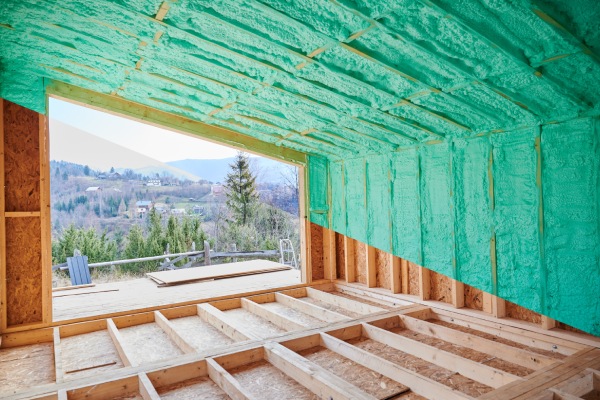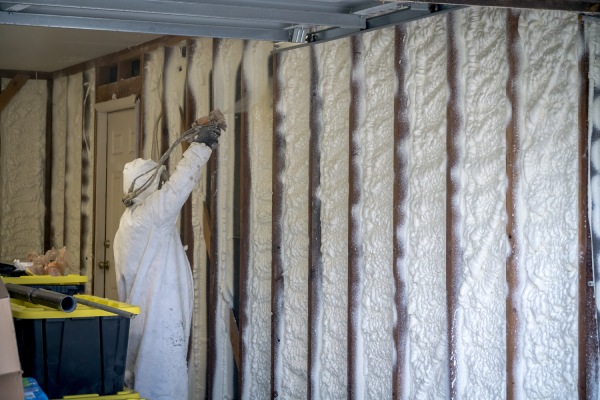Do you love South Texas? Do you hate the challenges and expenses, its climate presents when it comes to keeping a comfortable and energy-efficient building? Spray foam insulation could be the solution. You could even knock your energy bills down by a whopping 50 percent per month! There is a reason the spray foam market is set to grow over the next several years. As an experienced and trusted spray foam insulation contractor serving McAllen, Brownsville, Harlingen, and the surrounding areas of South Texas, we have seen this product deliver some amazing benefits – Take a look!

An Overview
Not every spray foam insulation is best for the hot and humid South Texas climate, that’s why choosing the right spray foam insulation is essential. Take a look at this comparison of closed-cell vs. open-cell options to understand the key differences. Both offer advantages for your home, and we proudly offer both here at Frontline, but understanding the differences will help you make the right choice for your property.
Feature Comparison
| Feature | Open-Cell Spray Foam | Closed-Cell Spray Foam | Recommendations for South Texas |
| Density | Low | Medium | |
| Ideal Applications | Interior use (walls, ceilings) | Both interior and exterior use | |
| R-Value* | Lower compared to closed-cell | Higher, providing better insulation | Given the high temperatures and humidity, higher R-value materials like closed-cell are beneficial for better thermal resistance and moisture control. |
| Moisture Resistance | Lower | Higher, can resist water | Closed-cell foam’s moisture resistance is crucial for combating South Texas’ humidity and preventing mold growth. |
| Air Sealing | Good | Excellent | Effective air sealing with either foam type improves HVAC efficiency by minimizing leakage. |
| Vapor Permeability | Higher | Lower | Closed-cell’s lower vapor permeability is advantageous for preventing moisture ingress in humid climates. |
| Overall Energy Efficiency | Contributes by reducing air leakage | Enhances by minimizing air leakage and resisting moisture | Both types improve energy efficiency, but closed-cell foam’s additional benefits make it particularly suitable for South Texas conditions. |
A Closer Look
Want to dig a little deeper to understand exactly what each type of spray foam insulation has to offer you and your property? Here is a little more detail on the two kinds we offer here at Frontline. We are also happy to talk about each with you in person!
Closed-Cell vs. Open-Cell
Open-Cell Spray Foam
As its name implies, the cells, or bubbles, of foam are at least partially open, creating a softer foam overall. Less dense and more flexible than closed-cell foam, it has an R-value of around 3.6 to 3.8 per inch of thickness. Open-cell foam is excellent at dampening sound and allowing for the building to “breathe” as it expands and contracts.
Closed-Cell Spray Foam
Consisting of cells, or bubbles, that are completely closed, this type of foam insulation is denser and more rigid. As a result, it also has a higher R-value compared to open-cell foam, typically ranging from 6.0 to 7.0 per inch of thickness. This type of foam also acts as a moisture vapor barrier, preventing dampness from penetrating the insulation. Closed-cell foam adds structural integrity to the building and is more resistant to temperature changes.
R-Values
Another term you saw on the chart above was “R-Value.” This term is a measure of a material’s resistance to the flow of heat. The higher the R-value, the better the material will insulate. Spray foam, particularly closed-cell foam, offers some of the highest R-values among insulation materials.

Performance Benefits of Spray Foam
In addition to high R-values, spray foam insulation provides several other performance benefits.
- Air Sealing: Spray foam expands and fills gaps, cracks, and crevices, creating an effective air barrier. This helps prevent air leakage, which can account for a significant portion of energy loss in a building.
- Moisture Control: Closed-cell spray foam acts as a moisture vapor barrier, preventing moisture from entering the insulation and reducing the risk of mold growth and structural damage.
- Durability: Spray foam insulation is highly durable and can last for the lifetime of the building with minimal maintenance required.
- Energy Efficiency: By providing superior insulation and air sealing, spray foam can help reduce energy consumption and lower utility bills by as much as 50 percent per month.
How To Choose
Ultimately, the right spray foam insulation for your home depends upon your particular preferences and circumstances. When choosing between open-cell and closed-cell spray foam, consider factors such as your climate, budget, and specific insulation needs. Here are a few considerations for each type:
Open-cell foam is generally more affordable and better suited for interior applications, while closed-cell foam offers higher R-values, moisture resistance, and structural benefits, making it ideal for exterior and below-grade applications.
At Frontline Home Solutions, we specialize in both open-cell and closed-cell spray foam insulation, and we are happy to discuss the benefits of each for your needs. As a local business, we take pride in serving the communities of McAllen, Brownsville, Harlingen, and beyond. Our team of experienced professionals is dedicated to helping you select the best spray foam insulation solution for your specific needs. Our decades of experience and local, licensed, and insured teams make us the ideal choice to insulate your South Texas space, whether you are renovating your home or building a new commercial building.
When you choose our spray foam insulation services, you can trust that Frontline Home Solutions has you covered. It is time to take charge of your energy bills and improve the comfort of your property. Contact us today for a free consultation. We look forward to talking with you!</span




